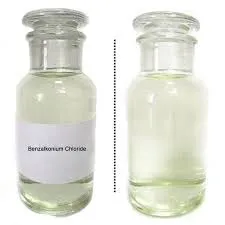Market Analysis of Polyacrylamide Pricing Trends and Future Projections
Understanding Polyacrylamide Prices Factors and Trends
Polyacrylamide (PAM) is a versatile polymer widely used across various industries, including water treatment, oil recovery, paper manufacturing, and agriculture. Its ability to enhance the efficiency of processes makes it invaluable for many applications. However, one of the significant concerns for businesses and consumers alike is the price of polyacrylamide. Understanding the factors influencing its price and current trends is essential for making informed purchasing decisions and strategic business planning.
Factors Influencing Polyacrylamide Prices
1. Raw Material Costs The primary raw materials for producing polyacrylamide are acrylamide monomers and other additives. The prices of these raw materials fluctuate based on market supply and demand dynamics. An increase in crude oil prices, for instance, can lead to higher costs for the chemicals derived from petroleum, which are crucial for PAM production.
2. Production Capacity and Capabilities The production capacity of manufacturers plays a significant role in determining prices. When demand surges, manufacturers with limited production capabilities may not meet the market needs, resulting in increased prices. Conversely, an oversupply situation can lead to price reductions as manufacturers attempt to clear excess inventory.
3. Geography and Transportation Costs The location of production facilities and the distance to major markets can impact costs. Transportation expenses can add to the overall cost of polyacrylamide, especially if the product is shipped internationally. Regions with developed logistic systems may experience lower prices than those in remote or less accessible areas.
4. Market Demand The demand for polyacrylamide varies across industries. For example, the water treatment sector has seen a consistent demand for PAM, especially as global populations grow and access to clean water becomes increasingly critical. Similarly, industries such as mining and oil recovery are also significant consumers of polyacrylamide. Fluctuations in these demand sectors directly affect pricing dynamics.
5. Regulatory Environment Regulatory policies regarding chemical usage and environmental standards can also influence prices. Stricter regulations may lead to increased production costs, as manufacturers invest in compliance, which can be passed on to consumers in the form of higher prices.
Current Market Trends
polyacrylamide price

The price of polyacrylamide has been subject to various trends in recent years. As of 2023, the global PAM market has seen fluctuations owing to a combination of the aforementioned factors. In the wake of the COVID-19 pandemic, disruptions in supply chains led to temporary price surges. Manufacturers faced challenges in sourcing raw materials, and logistics issues compounded the problem.
However, as economies began to reopen, the demand for polyacrylamide rebounded, particularly in the water treatment and agricultural sectors. The rise in agricultural production to ensure food security has driven significant interest in PAM as a soil conditioner and in irrigation management.
Regional markets have also shown varied trends. For instance, Asia-Pacific, especially China, continues to dominate the production and consumption of polyacrylamide due to its extensive industrial base. As a result, shifting market demands and production capabilities in this region can lead to significant price adjustments.
Future Outlook
Looking ahead, the price of polyacrylamide is expected to be influenced by several emerging factors. Global initiatives targeting sustainability and the reduction of chemical use in agriculture may result in a transition toward more environmentally friendly alternatives. This shift could impact supply and demand dynamics and shape future pricing structures for polyacrylamide.
Moreover, advancements in production technology may lead to cost reductions, allowing manufacturers to produce polyacrylamide more efficiently and potentially at lower prices. Conversely, ongoing geopolitical tensions and trade policies can also introduce volatility into the pricing landscape.
Conclusion
In summary, polyacrylamide prices are influenced by a complex interplay of raw material costs, production capacities, geographic factors, market demand, and regulatory environments. While the market has experienced fluctuations and evolving trends, staying informed about these factors is crucial for businesses that rely on polyacrylamide. Understanding the underlying forces shaping pricing will aid in making strategic decisions and optimizing procurement strategies in this essential chemical market. As we look to the future, both challenges and opportunities will continue to influence the pricing landscape of polyacrylamide.
-
Premium Isothiazolinones | Broad-Spectrum Biocidal SolutionsNewsAug.28,2025
-
LK-319 Special Scale And Corrosion Inhibitor For Steel Plants: Advanced Solutions for Industrial Water SystemsNewsAug.22,2025
-
Flocculant Water Treatment: Essential Chemical Solutions for Purification ProcessesNewsAug.22,2025
-
Isothiazolinones: Versatile Microbial Control Agents for Industrial and Consumer ApplicationsNewsAug.22,2025
-
Scale Inhibitor: Key Solutions for Water System Scale PreventionNewsAug.22,2025
-
Organophosphonates: Versatile Scale Inhibitors for Industrial Water SystemsNewsAug.22,2025





